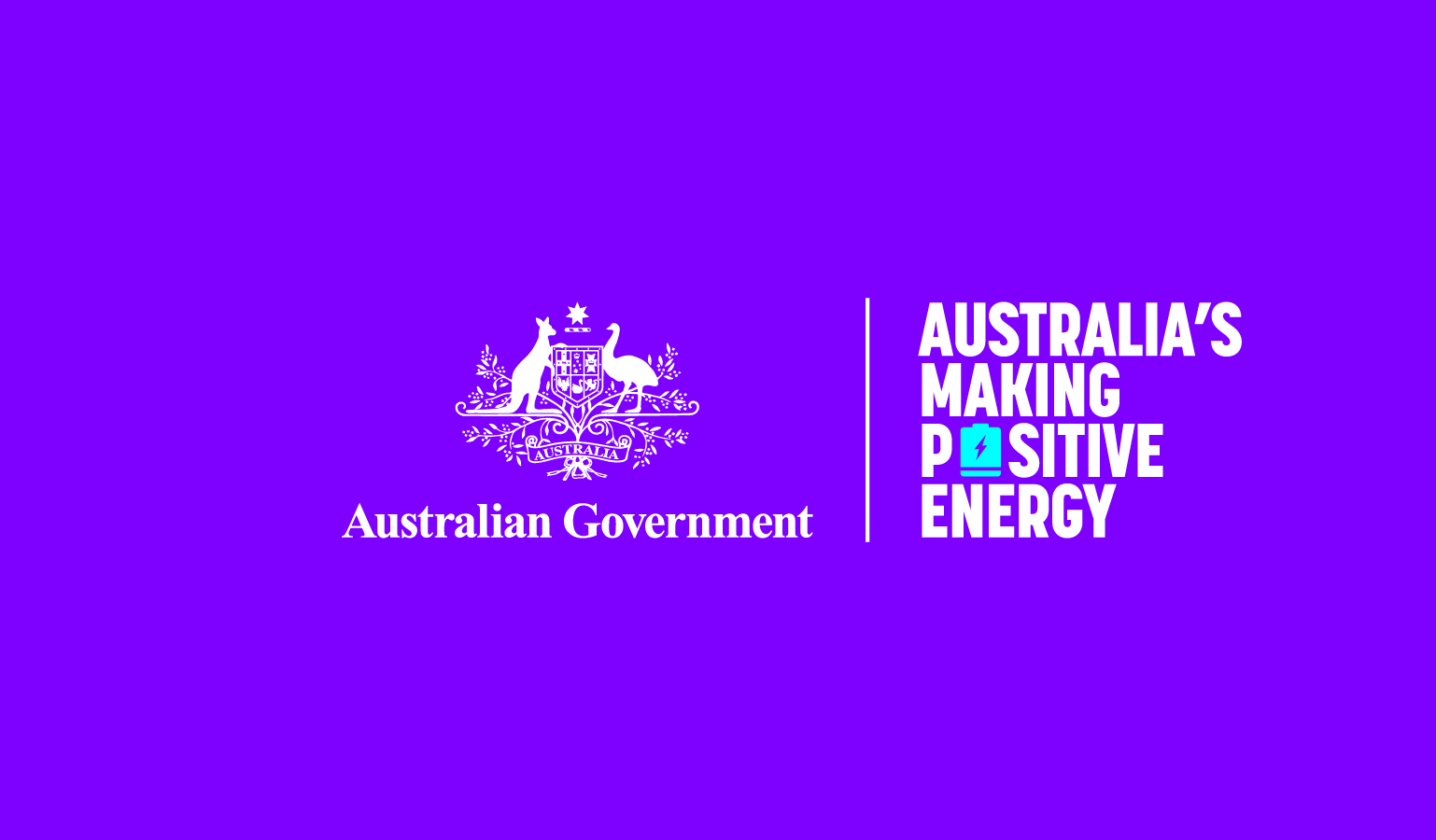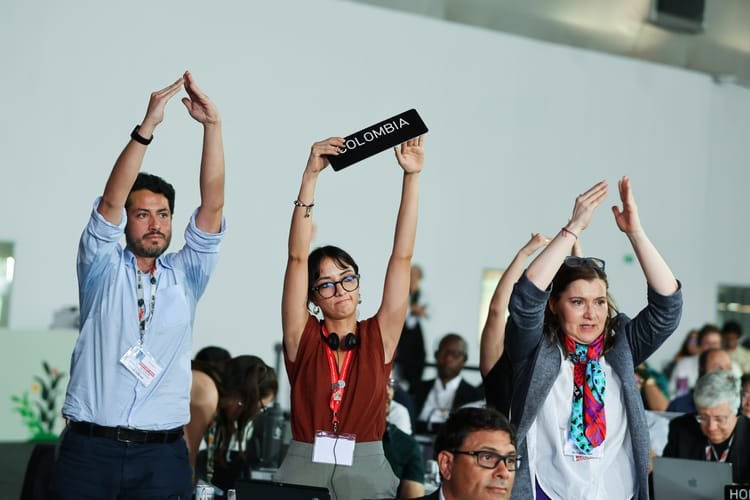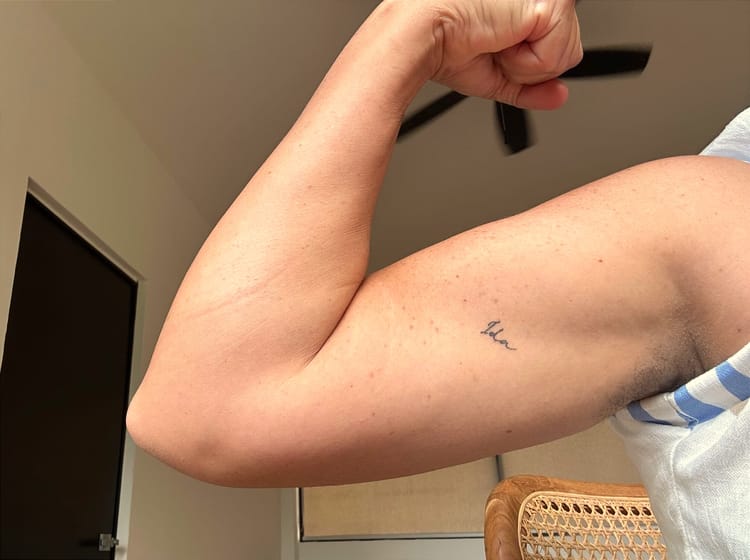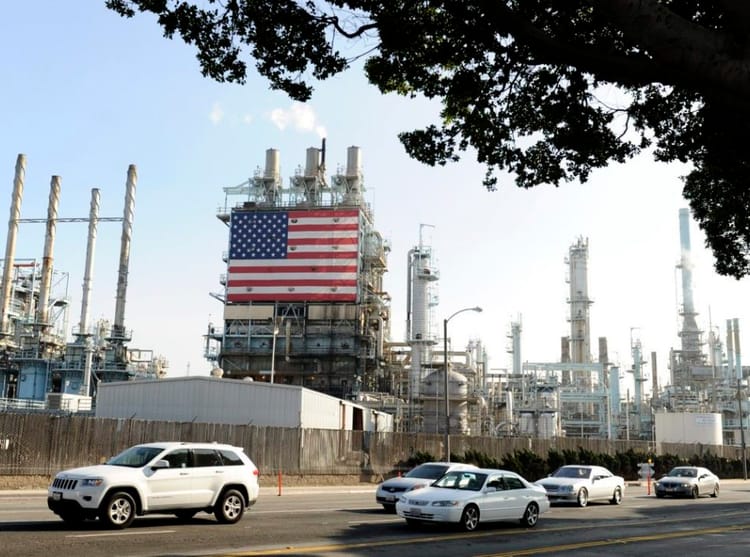Podcast: As Australia Heads to the Polls, a Look at Greenwashing & CSS

By Lyndal Rowlands, in Australia
Australia is about to hold its first federal election since record-breaking bushfires - fueled at least in part by intense heat and drought made worse by climate change.
The fires finally died out just over two years ago after burning for nearly a year across 60 million acres.
Around the world the fires were covered as a wake-up call on climate change but in Australia the government under conservative Prime Minister Scott Morrison has seemed more concerned with putting a positive spin on its climate record in the lead up to this weekend’s election.
Soon after the fires, the government proposed a gas-fired recovery from the pandemic - and in 2020 Australia became the worlds' biggest exporter of gas - with the government scrambling to fast track projects including fracking on Indigenous lands and offshore drilling.
To help sell its expansion into gas the Morrison government has invested in promoting new technologies including Carbon Capture and Storage and a product it calls “clean” Hydrogen (not to be confused with "green hydrogen) made from coal and gas.
In today's special bonus episode of Drilled we look at some of the other ideas and technologies that have emerged as dubious "climate solutions" under Morrison (transcript continues below).
Positive Energy:We're investing billions in projects like hydrogen hubs and seaweed for feed (yum)
[00:00:47] Lyndal: In the lead up to the election the government ran an unprecedented ad campaign branding its investments in new technologies as “positive energy.”
[00:00:38] Positive Energy:Australia's making positive energy and there's more on the way.
The slogan is weirdly similar to the theme of this week’s Australian Petroleum Production & Exploration Association conference “Positive Energy for a changing world”
Both major parties—Morrison’s conservative Liberal Party and the more centre-left Labor party—sent speakers to the conference just days before the election.
But despite all this talk of “positive energy” many Australians are heading to the election with less positive feelings about climate change. The country is yet to truly reckon with the fires that burned out a little over two years ago and already this year there’ve been floods, heat waves and mass bleaching of the great barrier reef.
The government’s positive spin on future technologies that will allow the gas industry to keep polluting today, also downplays other problems for the fossil fuel industry including the growing costs and pollution risks of ageing coal mines and rusting oil rigs.
The industry is facing a growing bill to clean up its old infrastructure but some companies have been finding creative solutions - including one company which hopes government grants and commercial customers for carbon capture and storage will help it deal with an empty hole at the bottom of the Timor Sea.
That's the story we're digging into today on Drilled.
I’m Lyndal Rowlands, reporting from Australia.
The Timor Sea
[00:04:05] Lyndal: In 2019, Australia signed a new treaty with Timor-Leste recognising that oil and gas fields in the Timor Sea that Australia had laid claim to for decades were in fact in Timorese waters.
But by the time the treaty was signed, many of the most viable oil and gas fields in the Timor Sea were close to empty.
Instead, what was left were rusting oil rigs, hundreds of kilometers of pipelines and empty wells under the sea that would need to be filled with concrete.
[00:04:49] Adrian Evans: decommissioning is a growing challenge for the Australian oil and gas industry, and was recently estimated that removal of oil and gas equipment and plugging Wells will cost around 52 billion Australian dollars.
The costs of decommissioning all this offshore infrastructure around Australia runs into tens of billions of dollars around the country. Here’s Adrian Evans from the Maritime Union of Australia.
Adrian Evans: There's currently 1008 offshore Wells 57, fixed facilities, six and a half thousand kilometers of pipeline, 1500 kilometers of umbilicals and some 535 subsidy structures such as manifolds.
Evans was speaking at a senate inquiry that was called after an Australian company Woodside sold two oil fields in the Timor Sea to a company which soon went bankrupt.
These two oil fields came with a rusting oil platform called the Northern Endeavour and clean-up costs to prevent potential spills.
Charles Scheiner has spent decades researching oil and gas revenues in the Timor Sea for the Timorese think tank Lao Hamutuk.
[00:03:51] Charles Scheiner: The Northern endeavor is still there. It's rusting, it's leaking, it's in terrible shape and it's potentially a huge danger. To both Timor-Leste and Australia, if it fully leaks out what it has.
After the inquiry, the federal government introduced a levy on Australian oil exports to pay for the decommissioning of the Northern Endeavour, but this didn't make companies like Chevron, which would have to pay a larger share of the costs, exactly happy.
[00:04:27] Charles Scheiner: it'll cost somewhere around 200 million, more than $200 million to decommission the Northern endeavor and laminaria Coralina and bring it to a safe condition.
The decision to impose the costs on all companies did benefit at least one company, though. Woodside the company which sold the Northern Endeavour just before it began to rust into the sea.
Charles Scheiner: And somehow it doesn't have any responsibility, even though they are the ones who made all the money from this field.
Lyndal: He says this is not the first time that Woodside has benefited from the Australian government’s decisions in the Timor Sea:
[00:05:51] Charles Scheiner: Woodside is politically well-connected enough that it could wipe its hands and walk away.
[00:06:01] Lyndal: But the two fields Woodside abandoned weren’t the only fields in the Timor Sea that need to be decommissioned.
Further East is a much larger field known as Bayu Undan. In 2019 another Australian company Santos purchased ConocoPhillips’ interests in the Timor Sea - including Bayu Undan as well as another field that has yet to be developed in the Australian part of the Timor Sea - called Barossa.
Jason Fowler is a marine ecologist with the Environment Centre Northern Territory.
[00:06:19] Jason Fowler: so Santos are up for about a billion dollar bill to decommission the old Bayu Undan field. now the reason for this is because there's dozens and dozens of gas Wells out there. They all need to be, uh, properly capped and sealed. So you need to pump concrete in them and really seal them up properly So they never ever leak. If they do leak you could have oil bubbling up to the surface.
But Santos has announced that it’s plans which could potentially offset or at least delay some of the costs of decommissioning Bayu Undan by turning the empty field into a carbon capture and storage project.
Here’s Dina Rui from Jubilee Australia.
[00:02:08] Dina: So what they want to do is they want to pipe the gas from the Barossa gas field to Darwin. Extract the CO2 and then pipe the gas for 500 kilometers out to the Bayu Undan facility again.
At Santos recent Annual General Meeting the Chair of the board Keith Spence described the proposal as a "bold plan to repurpose the Bayu-Undan facilities for carbon capture and storage after gas production ceases”
Spence said Bayu Undan could store up to 10 million tonnes of CO2 per year including 2.3 million tonnes of CO2 from the Barossa, which Santos claims would make the Barossa one of the lowest-carbon gas projects in the world.
Santos says its already had expressions of interest from commercial customers in South Korea and Japan who wanted to store their CO2 there.
Gas from the Barossa will be exported to countries including Japan and Korea But the South Korean organisation Solutions for our Climate has launched a court case claiming that claims about the Barossa project and Carbon Capture and Storage amount to greenwashing. Here’s Dong Jae Oh, a researcher with Solutions for our Climate.
[00:10:26] Dong Jae Oh: with the Barossa Gas project their claim is that, um, it would use carbon capture and storage. Um, also CCS technology in the production stage, but, according to their plan, assuming if in the worst, they will only capture about 16% of the total projected amount of emissions. On top of that, um, day plan to compress carbon dioxide and transport this over, um, 900 kilometers of pipe. Which would actually end up producing so much emission that so much additional emission, that it would negate, the entire purpose of adding CCS.
[00:11:05] Lyndal: Solutions for our Climate are also concerned that the Korean government is underwriting fossil fuel expansion in Australia through its export credit agency.
[00:11:14] Dong Jae Oh: Our governments gave about 127. Billion dollars for the last 10 years to the oil and gas to the overseas oil and gas projects overseas.
Even if Santos’ claim that Bayu Undan can store 10 million tonnes of CO2 per year are true its proposal to store CO2 under water hundreds of kilometers out to sea is much more logistically complicated than other more simple Carbon Capture and Storage projects that have failed to meet their targets.
[00:08:44] Dina: And as we know, CSS is an unproven and very expensive technology and it doesn't really work at a large scale. And this has actually never been done at an offshore facility like Bayu Undan before.
So, again, Santos is using CCS as a green tool to push through one of the dirtiest gas projects in Australia and possibly the world.
Rui says Barossa has yet to be drilled because it has much higher concentrations of CO2 than other fields in the Timor Sea.
Dina: So the Barossa Gas field is one of the dirtiest gas projects in the world. It has double the amount of CO2 at 18% of any other off shore Australian gas fields currently in operation.
If you look at how much LNG that the Barossa gas plant will actually produce, it will produce more emissions than LNG. So the Barossa gas field is going to produce 3.7 million tons of LNG every year. At the same time, as it's going to produce 5.4 million tons of CO2 emissions every year.”
The high CO2 concentration hasn’t deterred Santos, which also plans to build hundreds of kilometers of underwater pipe so that it can send the gas from the Barossa field to Darwin where it plans to take some of the CO2 out before piping it back into another part of the Timor Sea for storage at Bayu Undan.
The new Barossa pipeline would also pass through important nesting areas for turtles.
Jason: to lay the pipeline through that area, you literally, you have a giant pipeline ship, which is up to 65 meters high. It has a big light at the top, which is super bright. They measure the brightness in intensities of full moons to QB an idea of how bright this thing is.
And that's obviously going to have an impact on turtle nesting, and also baby turtles that hatch and come off the beach because turtles are attracted to light. And you may end up in a situation where baby turtles are all rushing towards the BlackLine ship and, uh, accumulating in the, in the, in the light spill area behind the ship.
Santos has said that it can manage these risks.
For Santos, the plan means that not only can they tell investors that the Barossa Gas project will have low CO2 emissions but they can also keep the Bayu Undan field open longer.
But logistics aren’t the only issue with this proposal, as Scheiner from the Timorese think tank Lao Hamutuk points out while Barossa is in the Australian part of the Timor Sea, the 2019 agreement between Timor-Leste and Australia recognised that Bayu Undan was in Timorese waters.
[00:03:10] Charles Scheiner: The boundary agreement that Australia finally reluctantly signed, uh, was delayed until Bayu Undan was almost empty.
So Bayu Undan will store the CO2 from another field in Australian waters, after it’s returned to Timor-Leste a country with much smaller carbon emissions per person than Australia.
Safe decommissioning in the Timor Sea also remains a local environmental issue with, the effects of a 2009 oil spill still being felt
[00:12:06] Dina: Local communities there are still dealing with the legacy of the Montara oil spill in 2009, which damaged livelihoods of thousands of seaweed farmers.
[00:12:19] Lyndal: Santos plan to store CO2 at Bayu Undan means that it could potentially make more money from the facility before paying decommissioning costs, however Scheiner also notes that this potentially just delays these costs.
[00:12:33] Charles Scheiner: The decommissioning is, is a different issue. I mean, decommissioning, you're dealing with all of the toxic chemicals with the oil. It can still leak out whatever other things that are on the side. Rusting metal structures and whatever. Um, and that's a local danger. The CO2 is a global danger. The CO2, uh, adds to the carbon in the atmosphere adds to global climate change.
[00:12:56] Lyndal: After the Northern Endeavour was left rusting in the Timor Sea the Australian government regulator began to tighten up rules around decommissioning. Since these tighter regulations were introduced Santos is not the only company to propose CCS as an option for an old offshore field.
But CCS isn't the only way that companies have been finding creative ways to decommission offshore projects.
[00:13:19] Annica: Woodside had a mooring out there a historic mooring and it had kept this mooring in such disrepair that it was unable to well purportedly, unable to bring it on shore for, um, proper disposal. Uh, and as a consequence, Woodside proposed to, um, basically. Pick up this two and a half thousand ton pace of metal and plastic and tow it about a kilometer away from Ningaloo world heritage area reef and leave it there to create what they called an integrated artificial reef.
[00:13:58] Lyndal: A recent Freedom of Information request from the Australian Conservation Foundation found that the Australian Department of Agriculture, Water and the Environment had expressed concerns about Woodside's plans to decommission one of its offshore oil rigs by dumping it near a world heritage listed coral reef. This is Annica Schoo a researcher with the Australian Conservation Foundation:
[00:14:21] Annica: there was language like this, um, The some of the chemicals, for example, in the reservoir, Moring, a highly acutely toxic to aquatic organisms, they couldn't rule out risk to human health.
And, um, another thing that was raised by the department was 12.4 tons of plastic, which would be leached into the environment and probably consumed by turtles and, um, Marine animals in the receiving area.
The department themselves described it as questionable. Um, And it was really nice to see public servants giving Frank and Phyllis advice and the environment department doing its job.
And that is coming to a really tough but fair interim decision. On the matter, basically they contacted the company and said, Intending to reject this. We think it's contrary to international law on sea dumping, and there are a number of other bits of information that go against, uh, and then the company decided to withdraw the application.
[00:15:42] Lyndal: Yet despite Woodside's record on decommissioning Schoo notes that it has recently purchased more ageing offshore assets to the South-East of Australia in the Bass Strait.
Two weeks before the election the Morrison government quietly released a report detailing the extent of another mass bleaching of the Great Barrier Reef.
[00:16:01] Annica: Yeah, it's extremely ironic. Isn't it? I think, I mean, you could dump a shopping trolley in the ocean and something will, um, live in it, but is that the same kind of biodiversity that you see at Ningaloo reef? Um, no that is virtually impossible. These hard coral reefs are irreplaceable and, and have huge benefits and serve, um, human life and all other forms of life on this planet.
Australia promoting CCS
[00:16:27] Lyndal: Before calling the election the Morrison government announced a further round of funding for new technologies and the expansion of gas projects around the country.
Australia's gas exports have grown significantly in the past 10 years, yet this did not stop the government from promoting itself with a multi-million dollar greenwashing ad campaign in the lead up to the election.
[00:16:53] Positive Energy: Australia's making positive energy and there's more on the way.
[00:17:12] Lyndal: In contrast to the environmental impacts of climate change that Australians have seen since the last the election the ads were bright and upbeat:
[00:17:22] Belinda: Well, the positive energy campaign looks like a children's TV program. It's got green rolling Hills trees, cows and flying scooters. It uses big, bold graphics, uh, fun, quirky it's forward, focused and positive. Um, the campaign is basically everything the Australian government isn't
[00:18:22] Lyndal: Belinda Nobel from Comms Declare says that the Positive Energy ad campaign was unusual, even for the Australian government, under Prime Minister Scott Morrison who has a background in marketing.
[00:18:38] Belinda: the terms clean hydrogen and positive energy, um, the use of those terms is a deliberate strategy by the government to misinform the public about what they really want to do, which is to continue to be one of the world's top exporters of fossil fuels.
The ads referred specifically to government investments in so-called clean hydrogen.
Positive energy ad: We're investing billions in projects like hydrogen hubs and seaweed for feed (yum) which means thousands more jobs and even less emissions because what we do today will define our tomorrow.
[00:18:57] Lyndal: But a closer look at the website which accompanied the Positive Energy ad campaign included more details about what the government meant by "clean" hydrogen and how it is connected to Carbon capture and storage (CCUS). The website says that Carbon capture, use and storage (CCUS) allows Australian coal and gas to be transformed into clean hydrogen and that Carbon capture, use and storage can "permanently cut emissions from a range of sectors"
[00:01:37] Lyndal: In the lead up to the election the conservative federal government and the local Labor government announced hundreds of millions of dollars of grants for hydrogen and CCS projects at a Darwin industrial hub near where gas from Barossa will be processed before being piped to Bayu Undan for storage.
If you listened to our last episode from Australia you would have also heard how these plans for an industrial hub on the lands of the Larrakia people will include factories that will turn gas into plastic and other petrochemical products from fracking on Indigenous lands.
Despite the Australian government's optimism for carbon capture and storage to date researchers say that even some of the world's most ambitious and expensive CCS projects have only stored relatively small amounts of CO2, usually much less than the projects were supposed to hold. And unlike the plans at Bayu Undan these projects weren't hundreds of kilometers away from the initial source of CO2 via underwater pipelines.
[00:19:53] Charles Scheiner: but the CO2 will have to still be contained. In that, that site, if it's stored there and this is underground and underwater, right?
it's captured and stored very well by the rocks under the Timor sea.
They've held it for hundreds of millions of years, so to take it out and then put some of it back is a bit crazy.
Strangely “Positive Energy for a changing world” was also the theme of the Australian Petroleum Production & Exploration Association conference which attracted senior speakers from both major parties just a few days before the election.
Belinda: Yes, quite the coincidence that the gas lobby is using the same language as the Australian government and that's the language of positive energy.
After years of increasingly severe fires, floods, and heat waves, many Australians don’t share these same positive feelings towards fossil fuels. The Labor party has taken a muted approach to climate change to the election a few years after the mining industry and Rupert Murdoch’s News Corp led a backlash against Labor’s more ambitious climate policies. This election will not only determine which major party will form government but will also show how many Australians are ready to walk away from the major parties as they continue to support fossil fuel expansion.





